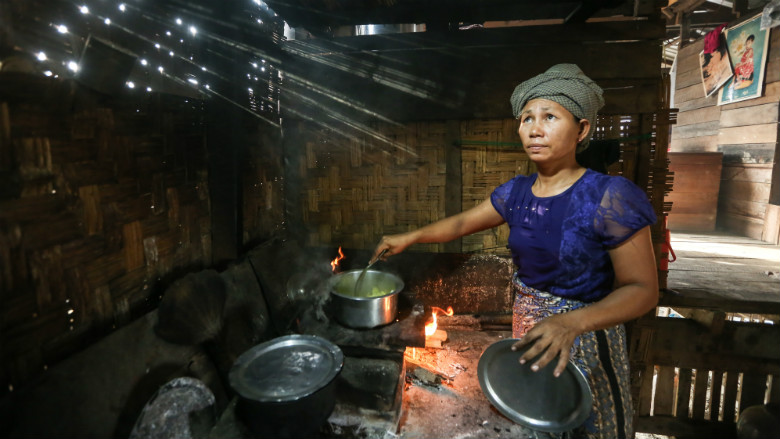Key Findings
A new poverty estimate based on 2015 living conditions released by the Ministry of Planning and Finance and the World Bank finds that poverty is estimated at 32% in 2015.
- Poverty in Myanmar’s rural areas is substantially higher than that in its urban areas: 38.8% of the rural population are estimated to be poor compared to 14.5% of those in its towns and cities.
- Poverty remains geographically spread in Myanmar: in the coastal and mountainous areas, 4 in10 of the population are poor and 1 in 6 will struggle to meet their basic food needs, while 65% of the poor live in the Dry Zone and Delta.
- Poverty has declined over time, a result consistent with the results of the Part One report released in August 2017.
Poverty can be clearly seen through the lens of a household’s human, physical and financial capital.
- Poor households are typically characterized as having more family members and more young and elderly dependents per working age adult. Household heads also typically have lower levels of education than the average household, and their working age members also have lower than average education levels.
- Poorer households are disproportionately concentrated in agriculture, either as casual laborers or as small holder farmers, and tend to be less diversified in their activities. Among those who are farming, they’re less likely to own the land that they cultivate. Poverty is strongly linked to low farming or agricultural labor incomes and a heavy reliance on the main monsoon crop.
- Poorer households are generally less integrated into the formal economy, and have limited access to official documents that enable access to public services and formal credit sources, enforce their claims and rights, and for undertaking secure market transactions.
Poverty reduces quality of life for all and limits the potential of Myanmar’s children in multiple ways.
- Malnutrition, high infant mortality, and poor quality education limit the physical and cognitive development of children from poorer households, affecting labor market outcomes.
- Approximately a third of households report limiting the quality of their diet as a consequence of inadequate resources while 8% of households report running out of food due to a lack of resources. Reports of limited quality food emerge from both poor and near-poor households.
- Although primary school participation rates are high for both poor and non-poor children, children from poorer households start falling behind before they drop out. In Myanmar, 6 out of 10 children who start grade one drop out before the end of middle school.
- Health issues can be seen across the poverty profile. Poor health is the single most common shock to welfare reported by households. Health expenditures are high and almost exclusively out-of-pocket, and the number of days of labor lost is significant, placing a large burden on households.
- Only a third of households have access to electricity through the public grid; nearly 3 in 10 people lack access to year-round improved drinking water supply; and many rural areas lack access to the critical infrastructure needed to connect to markets in and outside the country.
Households report facing costly shocks, such as weather or health incidents, reduce their ability to focus on longer-term investments and result in harmful coping strategies.
- Unanticipated shocks to income or welfare, such as the illness of a family member, crop failures, or natural disasters, can have severe negative repercussions and can send households into poverty.
- Beyond the 32% households living below the poverty line, a further 14% are near-poor, in that they live within 20% of the poverty line. For these households, small unanticipated shocks can send them back into poverty.
- Households weathering insecurities take actions that affect their ability to make longer term investments that can improve their well-being, including cutting back on their investments, selling core productive assets, withdrawing children from school, and taking out high interest loans.
About the report
- The report is the second of a two-part poverty assessment jointly conducted by the Ministry of Planning and Finance after a technical team from the ministry and the World Bank reviewed previous poverty measures in Myanmar.
- In this report, the poor are defined as those who cannot afford a basket of goods that captures basic minimum needs. The earlier report measured poverty in Myanmar based on basic minimum needs using consumption patterns from 2004/05.
- Part one of the poverty assessment recommended that the basket of goods defining poverty should be updated to reflect basic minimum needs of the poor in 2015.
- Part two of the report presents a new poverty estimate that reflects an updated assessment of what it means to be poor in Myanmar. The updates mean that consumer goods that were not previously widely available, such as mobile phones, are now included in the consumption aggregate for Myanmar.

